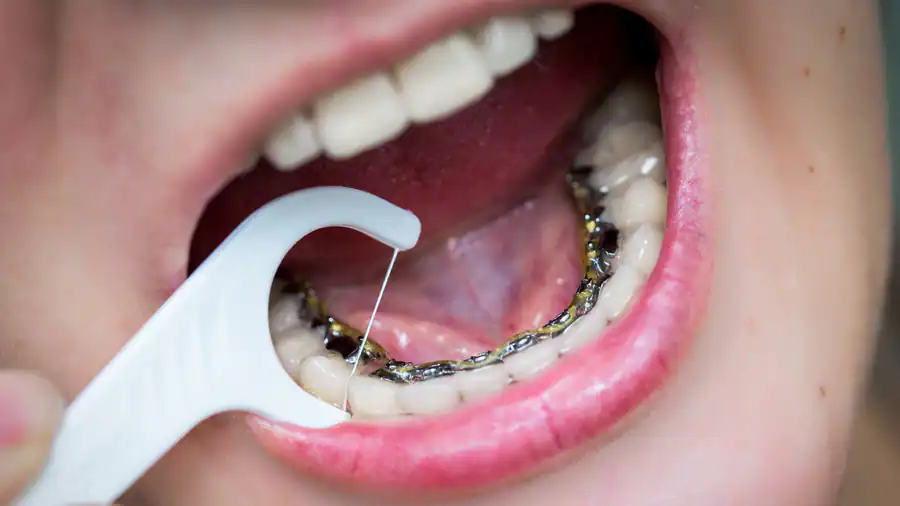Lingual braces are the most invisible type of dental braces. Unlike any other type of dental braces, lingual braces are placed behind your teeth.
What Are The Advantages of Lingual Braces?
Lingual braces probably sound like a great idea to just about anyone, but they do have some limitations. Let’s start with the advantages.
The biggest advantage is, of course, cosmetic. With ceramic braces, the brackets are tooth-colored and look more natural, but the metal wire connecting the brackets is still visible. You won’t have that problem with lingual braces. In fact, someone would have to look pretty close at your mouth or from certain angles to see them. Lingual braces are also great for people who play wind instruments or sports.
Now for the disadvantages. Lingual braces are not suitable for adults and teenagers who have small teeth or excessive bite problems (particularly an overbite). In general, lingual braces cost more than traditional braces because the brackets are custom-made. Some patients may also find it more difficult to adjust to lingual braces because the positioning affects the tongue, making swallowing and talking a little tricky.
Overall treatment time may also be longer than traditional braces. And finally, because of their placement, plaque buildup can be more of a problem because it’s difficult to see whether all food has been removed after brushing – that why it’s so important to stay on schedule with your dental visits!
The Lingual Braces Procedure and After-Care
Your first appointment for lingual braces involves taking an impression of your teeth. This impression will then be sent to a dental laboratory where your customized brackets are created using CAD/CAM and rapid prototyping technologies. Wires are created and bent using robotic technology. This process takes about six weeks. Once complete, your lingual braces orthodontist will use a precise process to cement them onto your teeth.
Afterwards, you’ll need to revisit the dentist for monitoring and progress reports. Your dentist might recommend the following after-care tips for home:
Practice swallowing without a tongue thrust. The placement of your new braces may make it difficult to swallow without using a tongue thrust – the act of placing the tongue between the teeth before and during the act of swallowing. To avoid this, practice this technique: Bring your upper and lower mandibles together so that your teeth gently touch and swallow. Repeat this exercise several times a day until swallowing becomes easier and more natural.
Practice talking and enunciating. You might have some difficulty enunciating clearly at first. Be sure to practice talking and over-enunciating to get used to talking with your new braces.
Practice eating at home before eating out. In the beginning, soft foods like chicken noodle soup, rice and mashed potatoes will be easier to eat. Stringy vegetables and steak may get stuck in your teeth. Give yourself ample time at home to test which foods are both comfortable and easy to eat before planning a fancy dinner out.
What is the Cost of Lingual Braces
There’s no doubt that braces are an investment of your time and money, but the benefits are worth it! As mentioned, the cost of lingual braces is generally more than traditional braces. Here’s why. First, lingual braces are custom-made to your smile using CAD/CAM and robotic wire technologies. As with anything that’s custom-made or uses specialized technology, the associated costs tend to be higher. Treatments also tend to be more involved and timely than traditional braces because of this customization process.
Second, lingual braces require specialized skills. Not every orthodontist offers lingual braces because this dental treatment requires extra training. For the ones who do, you can expect that he or she has taken continuing education courses; their expertise then figures into the lingual braces cost.
If the lingual braces price might seem beyond your means, remember that there are ways to make the cost of lingual braces manageable. Some dental insurance plans might cover some of the cost of lingual braces. Be sure to contact your dental plan provider for details on your coverage.
Another way to cover the lingual braces cost is to apply for a health care line of credit. CareCredit® offers low- to no-interest payment plans for up to 18 months. Consult with your dental office about what types of financing are accepted; many offer applications right in the office. Your orthodontist may also offer in-office payment plans, so make sure to ask!

